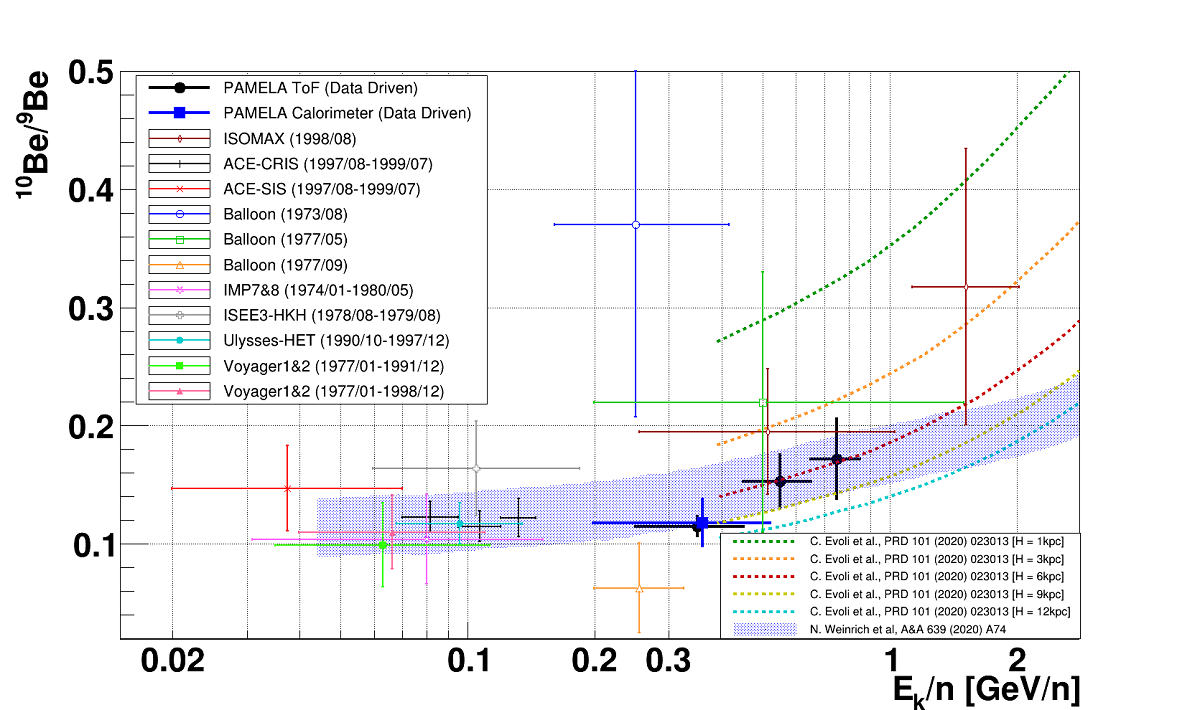Cosmic Rays (CR) are a powerful tool for the investigation of the structure of the magnetic fields in the galactic halo and the property of the Inter-Stellar Medium. Two parameters of the CR propagation models: the galactic halo thickness, H, and the diffusion coefficient, D, are loosely constrained by current CR flux measurements, in particular a large degeneracy exist being only H/D well measured. The 10Be/9Be isotopic flux ratio (thanks to the 2 My lifetime of 10Be) can be used as a radioactive clock providing the measurement of CR residence time in the galaxy. This is an important tool to solve the H/D degeneracy. Past measurements of 10Be/9Be isotopic flux ratio in CR are scarce, limited to low energy and affected by large uncertainties. Here a new technique to measure 10Be/9Be isotopic flux ratio, with a Data-Driven approach, in magnetic spectrometers is presented. As an example by applying the method to Beryllium events published by PAMELA experiment it is now possible to determine the important 10Be/9Be measurement avoiding the prohibitive uncertainties coming from the Monte Carlo simulation. It is shown how the accuracy of PAMELA data permits to infer a value of the halo thickness H within 25% precision.

